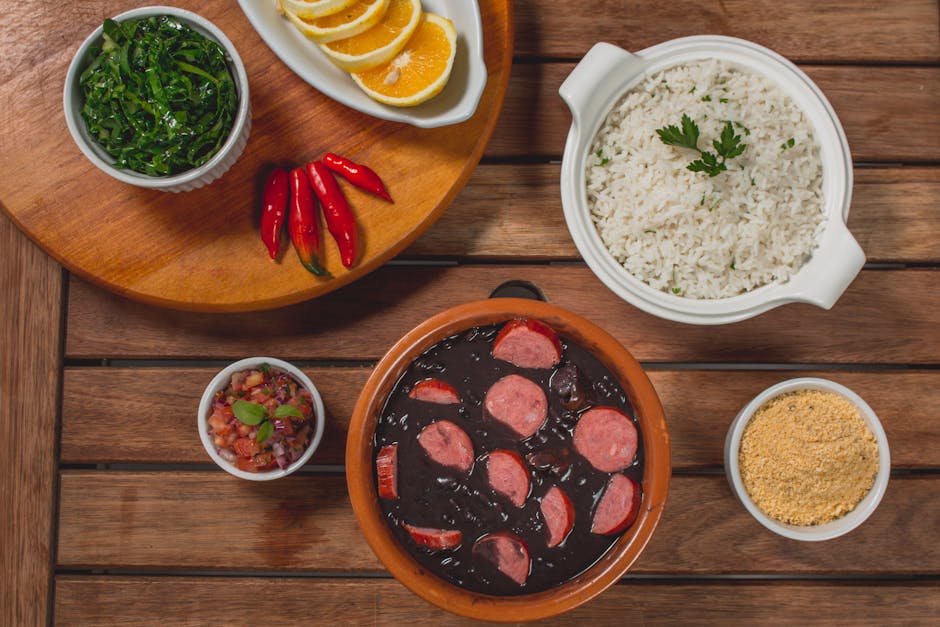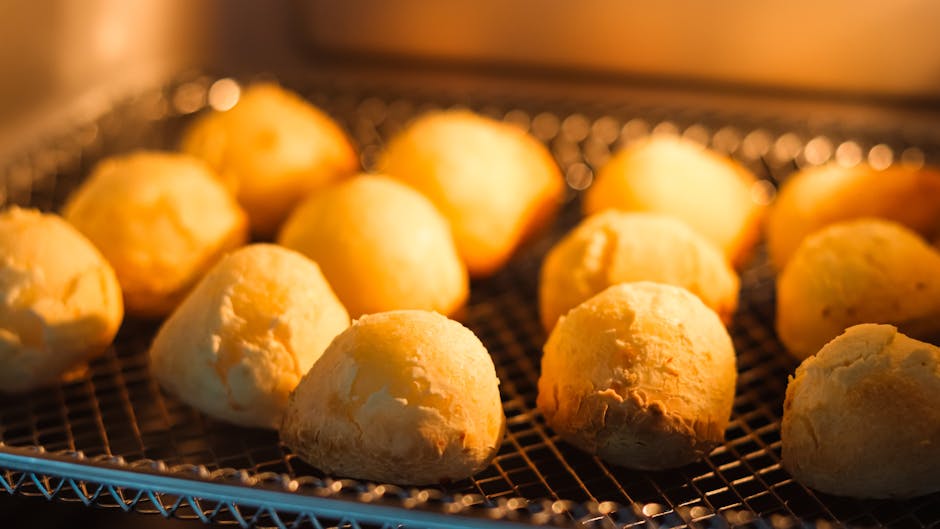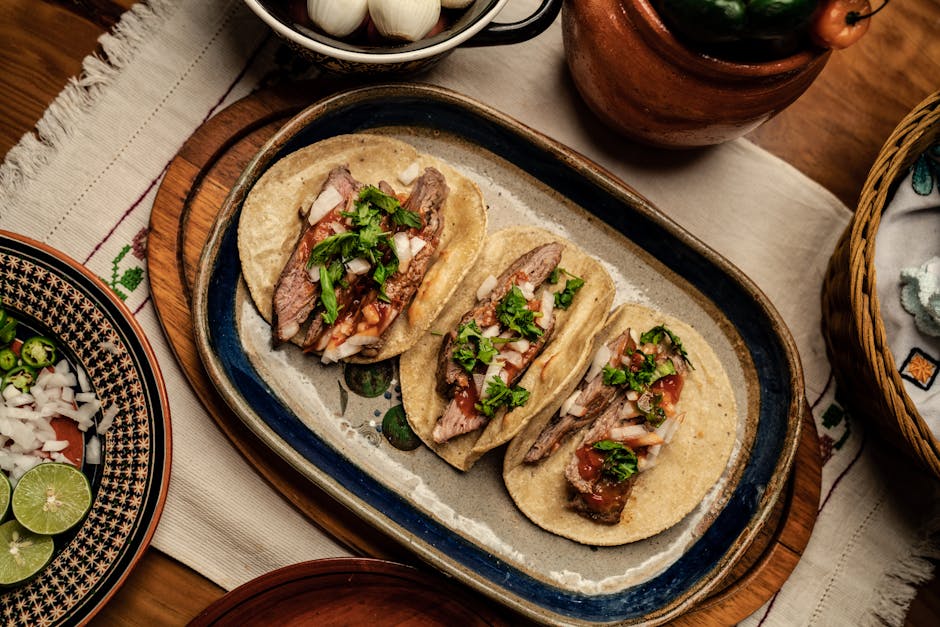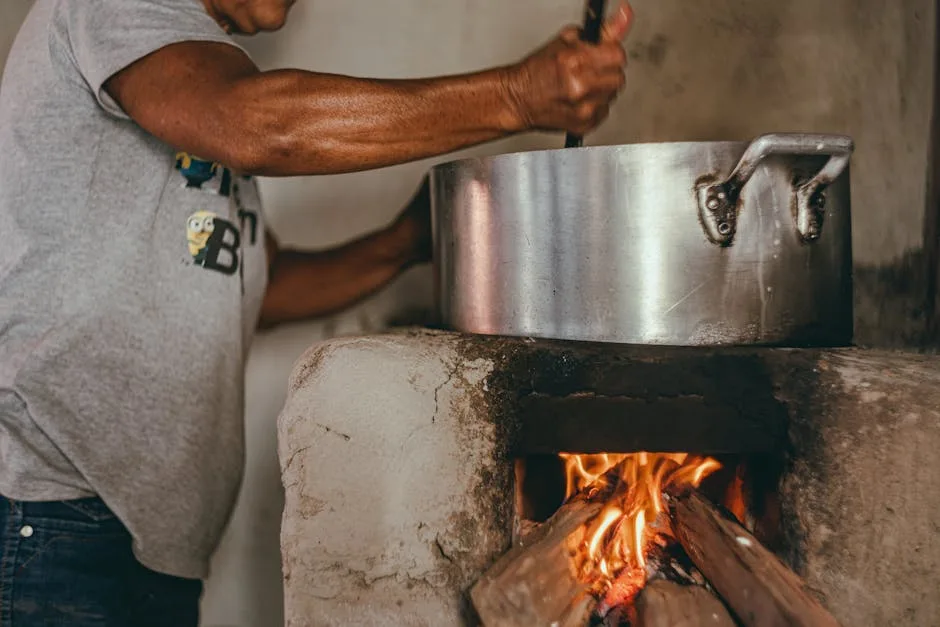The Secret Ingredient You Won’t Find in a Store
Picture this: you step into a home in Rio de Janeiro or a small town in Minas Gerais. The air is thick with the incredible aroma of garlic sizzling in olive oil, beans simmering gently on the stove, and something sweet and cheesy baking in the oven. Laughter spills from the kitchen. This isn’t a restaurant; this is the heart of Brazil. This is home cooking.
Brazilian cuisine is so much more than the world-famous churrascarias and acai bowls. The real magic happens in everyday kitchens, where generations of recipes are passed down, not always on paper, but through taste, touch, and memory. The secret ingredient? It’s called ‘tempero’ – a word that means seasoning, but truly signifies the personal, loving touch of the cook. It’s the unique blend of spices, care, and soul that makes a grandmother’s bean stew taste like no other. Today, we’re pulling back the curtain and inviting you into that kitchen. Let’s explore the soul-warming, vibrant, and utterly delicious world of Brazilian home-style meals.
The Pantry of a Brazilian Home: Essential Ingredients
Before we can start cooking, we need to understand the building blocks of Brazilian home-style food. While the country’s culinary landscape is vast and diverse, a few key ingredients form the foundation of countless everyday meals.
Manioc (Cassava/Yuca)
If there’s one ingredient that represents Brazilian ingenuity, it’s manioc. This humble root vegetable is a powerhouse of versatility. It’s used to make farinha de mandioca (manioc flour), which is toasted with butter and bacon to create farofa, a crunchy, savory side dish that accompanies nearly everything. It’s also the source of tapioca starch, the magic behind our beloved pão de queijo.
Arroz e Feijão (Rice and Beans)
Forget everything you think you know about rice and beans. In Brazil, this isn’t just a side dish; it’s the soul of the plate. It’s the daily foundation of lunch and dinner for millions. The beans (usually black or pinto beans, depending on the region) are cooked slowly with garlic, bay leaves, and sometimes a bit of sausage or bacon until they are creamy and deeply flavorful. The fluffy white rice is the perfect canvas for soaking up every last drop of the bean broth. It’s simple, nutritious, and profoundly comforting.
Cheiro-Verde & Key Aromatics
‘Cheiro-Verde’ literally translates to “green smell,” and it’s typically a fresh combination of finely chopped scallions and parsley. Alongside sautéed garlic and onions, this forms the aromatic base for countless stews, meats, and sauces. It’s the first thing that hits the pan and the last thing sprinkled on top for a burst of freshness.
The Weekend Feast: Feijoada Completa (The Not-So-Humble Bean Stew)
You can’t talk about brazilian food without paying homage to Feijoada. While often found in restaurants, its true spirit is in the home, cooked slowly on a Saturday for a long, leisurely lunch with family and friends. At its core, it’s a rich, black bean stew simmered for hours with a variety of salted and smoked pork and beef cuts. Don’t be intimidated! A home-style version is surprisingly achievable and incredibly rewarding.
A true Feijoada is an event, served ‘completa’ (complete) with a vibrant array of side dishes that cut through the richness of the stew.

Simplified Home-Style Feijoada Recipe
Ingredients:
- 1 lb black beans, soaked overnight and drained
- 1/2 lb bacon, diced
- 1/2 lb smoked sausage (like kielbasa or paio), sliced
- 1 lb pork ribs or shoulder, cut into chunks
- 2 large onions, chopped
- 6-8 cloves garlic, minced
- 2 bay leaves
- Water or low-sodium broth to cover
- Salt and black pepper to taste
- Orange slices, for serving
- Sautéed collard greens (couve), for serving
- Farofa (toasted manioc flour), for serving
- White rice, for serving
Instructions:
In a large, heavy-bottomed pot or Dutch oven, cook the diced bacon over medium heat until crispy. Remove the bacon with a slotted spoon and set aside, leaving the rendered fat in the pot. Brown the sausage and pork pieces in batches, then set aside. Add the chopped onions to the pot and cook until soft and translucent, about 5-7 minutes. Add the minced garlic and cook for another minute until fragrant. Return all the meat (including the cooked bacon) to the pot. Add the soaked and drained black beans, the bay leaves, and enough water or broth to cover everything by about 2 inches. Bring to a boil, then reduce the heat to a low simmer. Cover and let it cook for at least 2-3 hours, or until the beans are tender and creamy and the meat is falling off the bone. Stir occasionally and add more water if it gets too thick. Season with salt and pepper in the last 30 minutes of cooking. Serve hot over white rice with collard greens, farofa, and fresh orange slices on the side.
A Taste of the Coast: Moqueca Baiana (Coconut Seafood Stew)
Travel to the vibrant, sun-drenched state of Bahia, and you’ll find Moqueca. This stunning seafood stew is a testament to Brazil’s Afro-Brazilian heritage. It’s a symphony of sweet, savory, and tangy flavors, with a beautiful golden hue from its key ingredient: azeite de dendê (red palm oil). It’s surprisingly quick to make and guaranteed to transport you to a beachside paradise.
Easy Moqueca Baiana Recipe
Ingredients:
- 1.5 lbs firm white fish fillets (like cod or halibut), cut into large chunks
- Juice of 1 lime
- 4 cloves garlic, minced
- Salt and pepper
- 3 tbsp olive oil
- 1 large onion, sliced
- 1 red bell pepper, sliced
- 1 yellow bell pepper, sliced
- 1 bunch cilantro, stems and leaves separated
- 2 large tomatoes, chopped
- 1 (13.5 oz) can full-fat coconut milk
- 2 tbsp dendê oil (red palm oil)
Instructions:
Season the fish chunks with lime juice, half the minced garlic, salt, and pepper. Let it marinate for about 20 minutes. In a wide, shallow pot (a Dutch oven works well), heat the olive oil. Sauté the onion, bell peppers, and the remaining garlic until softened. Add the chopped tomatoes and the cilantro stems (save the leaves for later). Cook for 5 minutes until the tomatoes break down. Pour in the coconut milk, stir well, and bring to a gentle simmer. Carefully nestle the marinated fish pieces into the sauce. Drizzle the dendê oil over the top. Cover the pot and let it simmer gently for 10-15 minutes, or until the fish is cooked through and flaky. Do not stir too vigorously, or the fish will break apart. Turn off the heat, stir in the fresh cilantro leaves, and serve immediately with white rice.
The Irresistible Snack: Pão de Queijo (Brazilian Cheese Bread)
If you visit a Brazilian home, you will almost certainly be offered coffee and Pão de Queijo. These little golden puffs of cheesy, chewy goodness are dangerously addictive. Made from tapioca starch, they are naturally gluten-free and have a unique texture that’s crispy on the outside and wonderfully gooey on the inside. They are perfect for breakfast, an afternoon snack, or anytime, really.

Simple Blender Pão de Queijo Recipe
Ingredients:
- 1 large egg
- 1/3 cup olive oil or other neutral oil
- 2/3 cup milk
- 1 1/2 cups (170g) tapioca flour/starch
- 1/2 cup (about 50g) grated parmesan cheese
- 1/2 tsp salt
Instructions:
Preheat your oven to 400°F (200°C). Grease a mini-muffin tin. Place all ingredients into a blender: egg, oil, milk, tapioca flour, cheese, and salt. Blend on high for about 30 seconds, or until the batter is completely smooth. Pour the thin batter into the prepared mini-muffin cups, filling them about 3/4 of the way full. Bake for 15-20 minutes, or until the Pão de Queijo are puffed up and lightly golden brown. Let them cool for a minute or two before removing them from the tin. They are best enjoyed warm!
The Weeknight Workhorse: Bife Acebolado (Steak with Onions)
This is the quintessential Brazilian weeknight meal. It’s fast, flavorful, and deeply satisfying. *Bife Acebolado* is a thin steak, pan-fried to perfection and then smothered in a mountain of soft, sweet, caramelized onions. It’s the star of the *Prato Feito* (PF), or the “set plate,” which is the standard lunch in many Brazilian eateries and homes.
The secret is to slice the steak thinly so it cooks in minutes. It’s often served with the classic rice and beans, a simple green salad, and sometimes a pile of french fries. It’s a perfect example of how simple ingredients, cooked well, can create an unforgettable meal.

Cooking Brazilian food is about more than just following a recipe. It’s about feeling the rhythm of the kitchen, embracing bold flavors, and sharing the results with people you love. So go ahead, put on some samba, pour yourself a caipirinha, and bring the warmth and joy of a Brazilian home into your own kitchen. You’ll find it’s a journey well worth taking.





